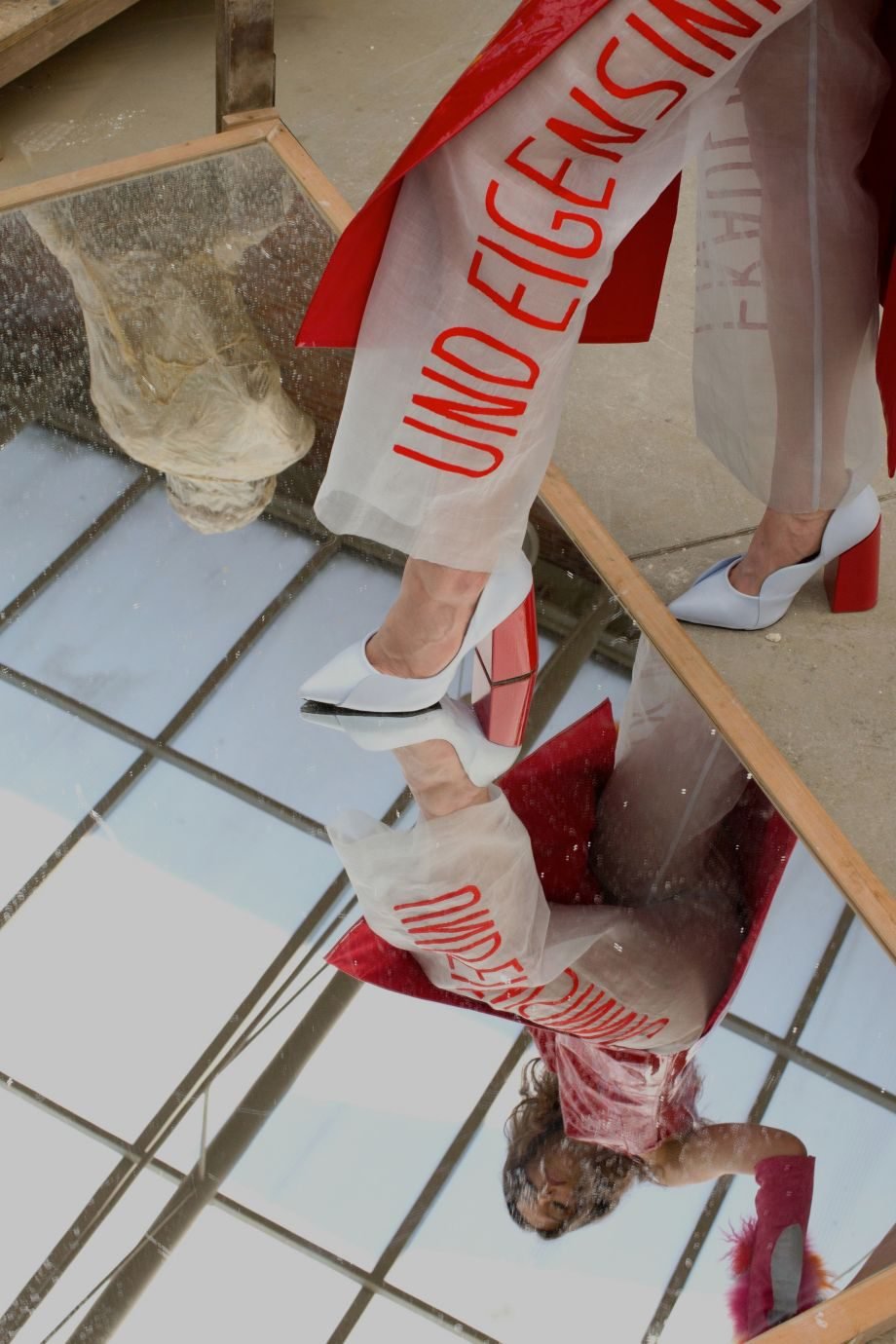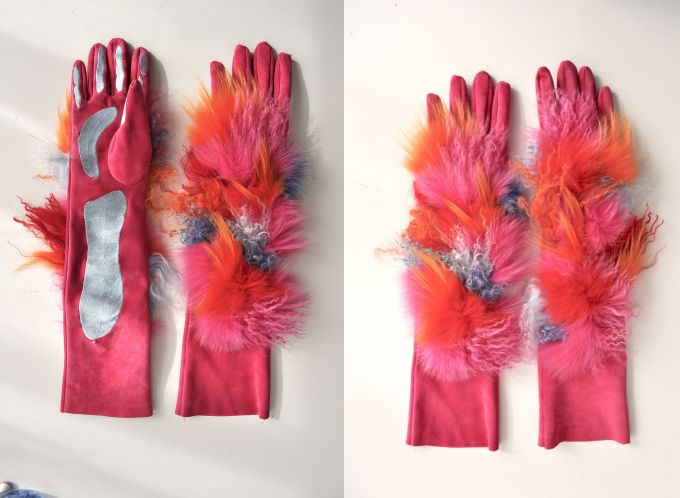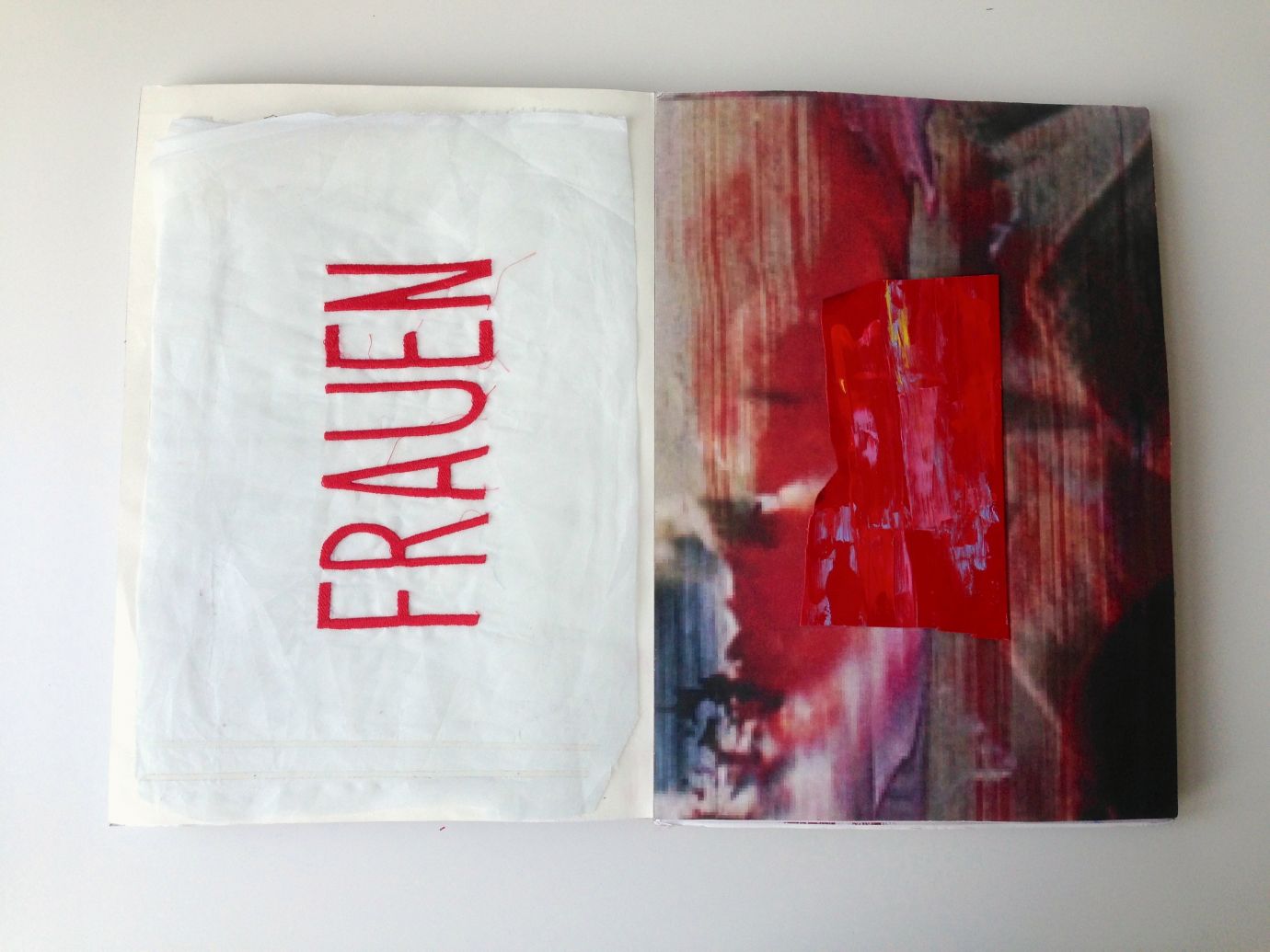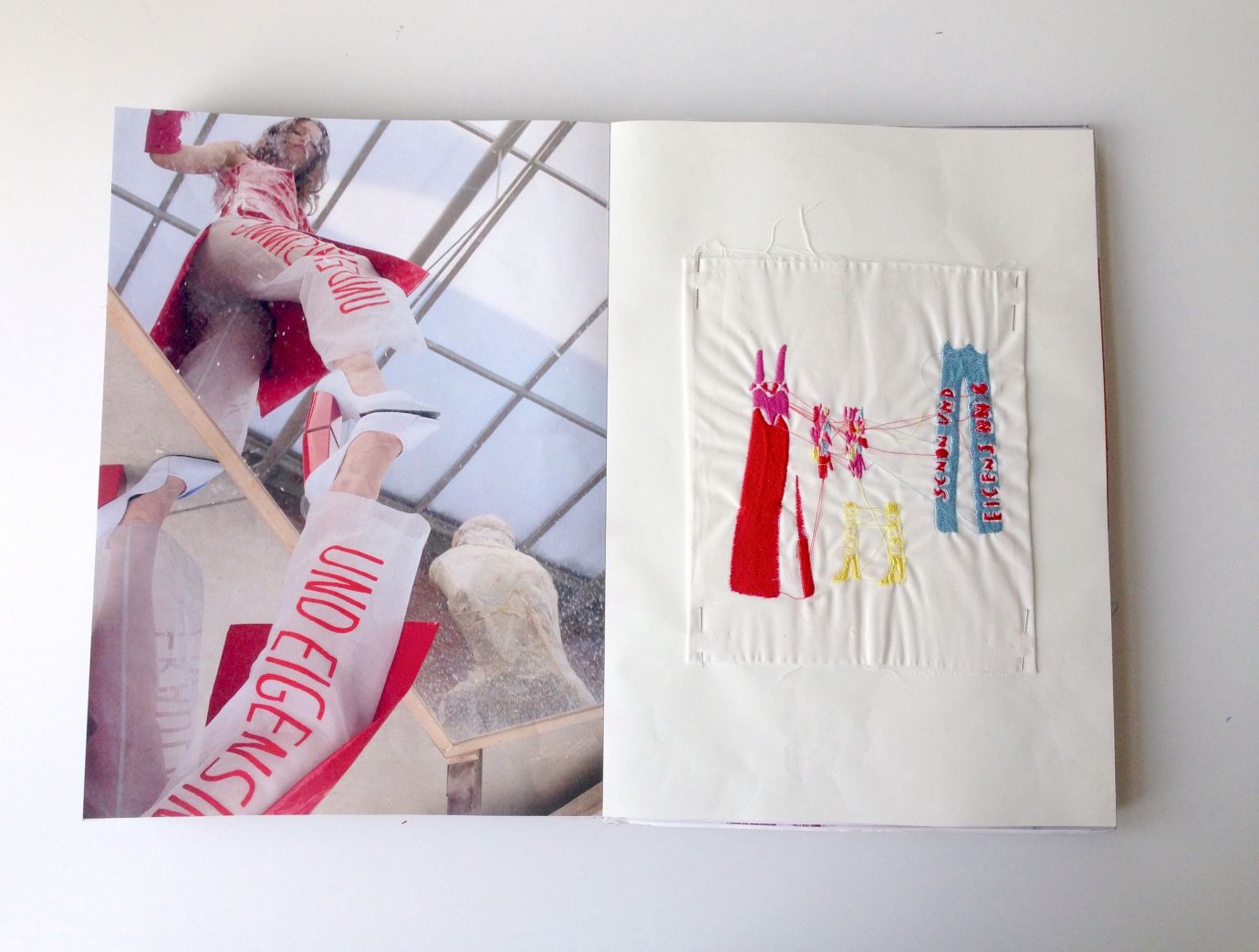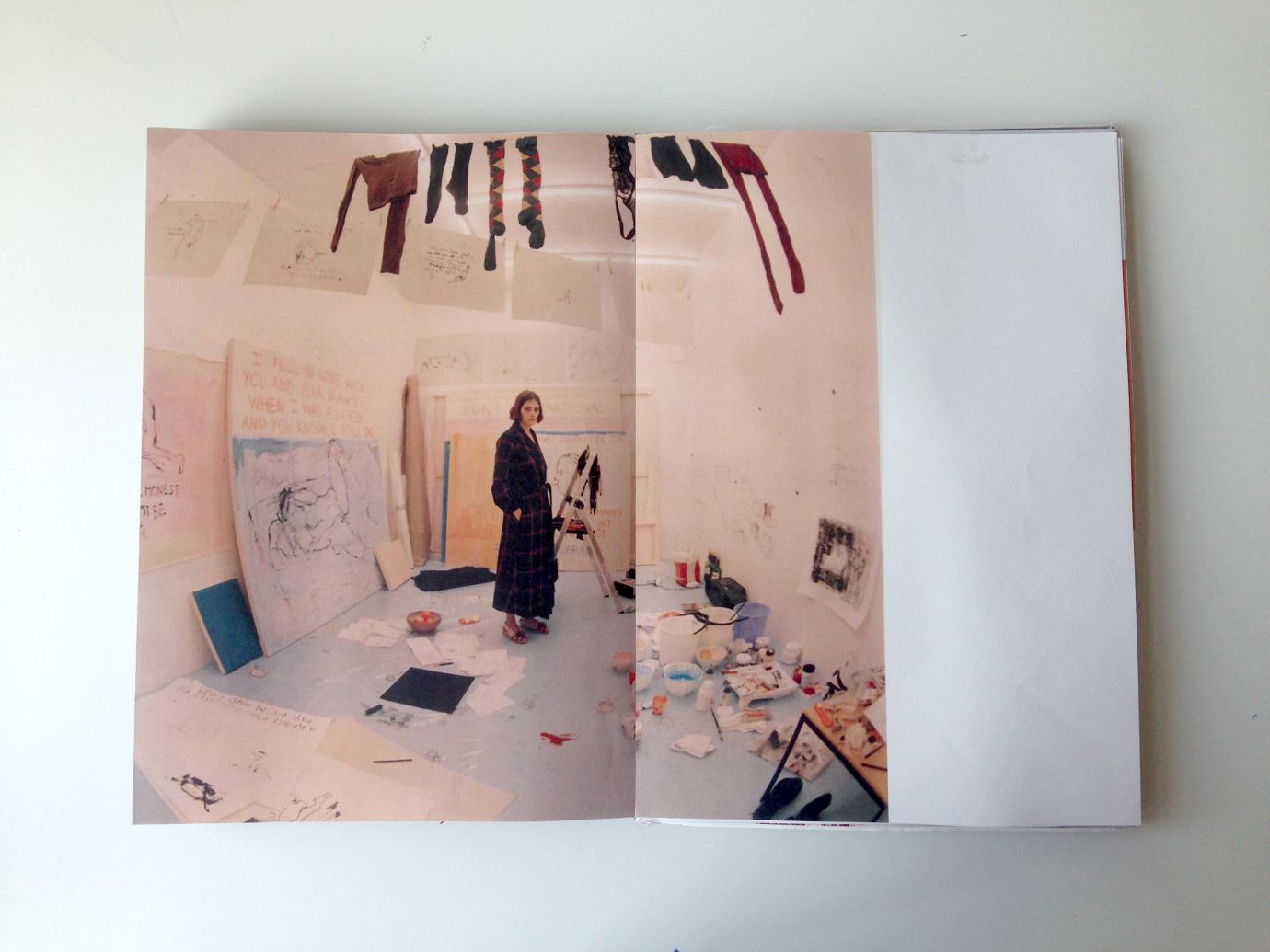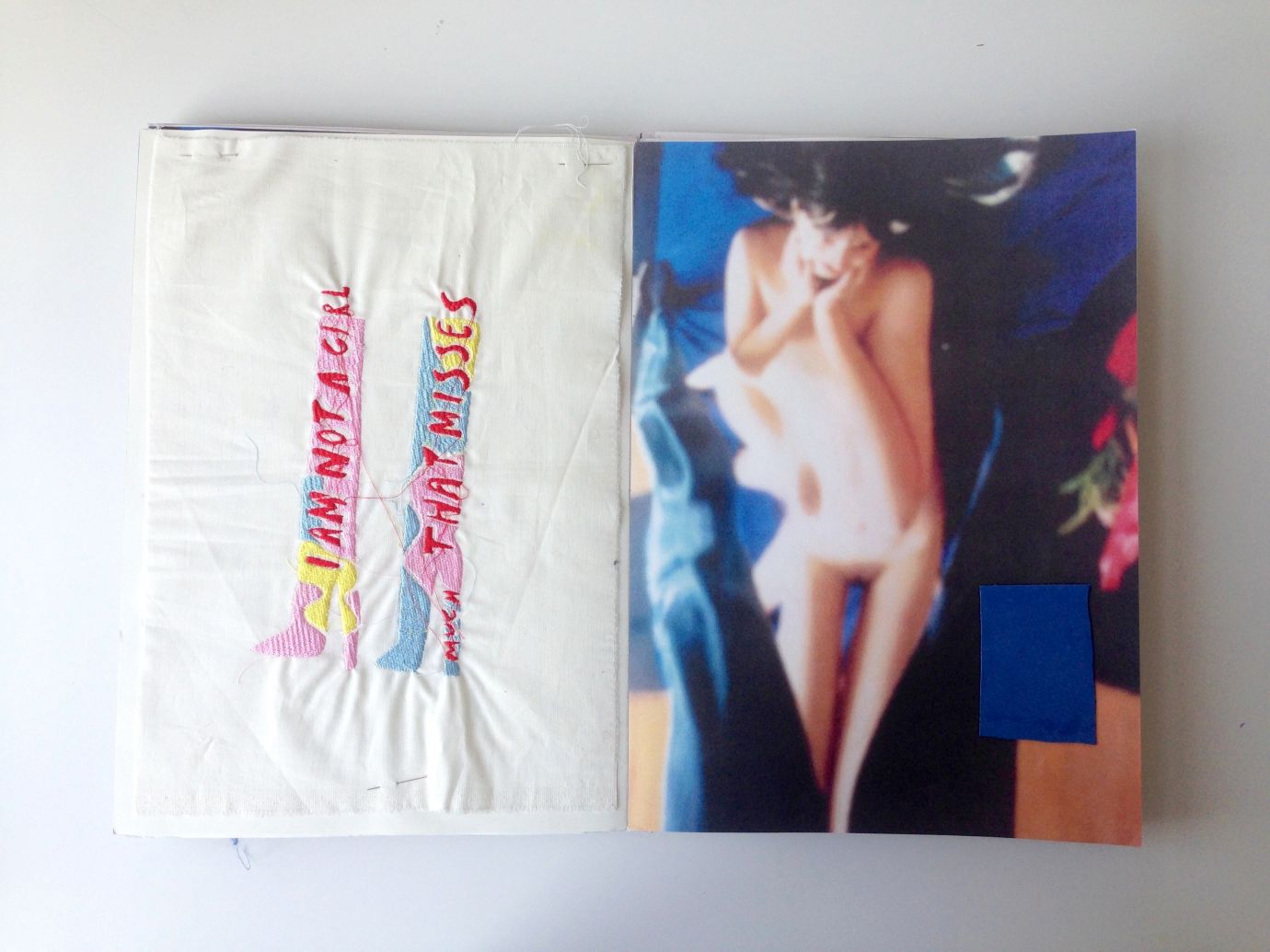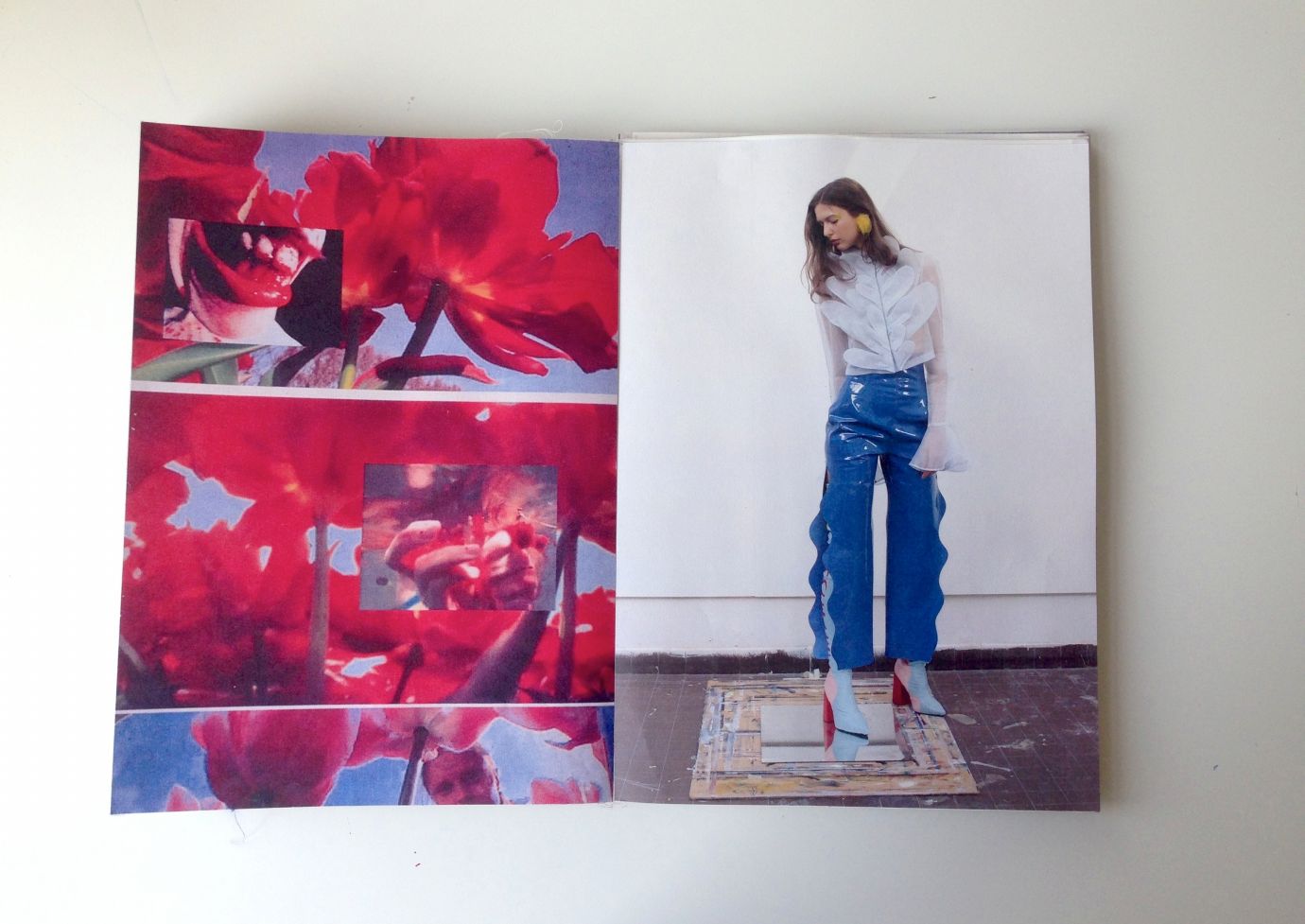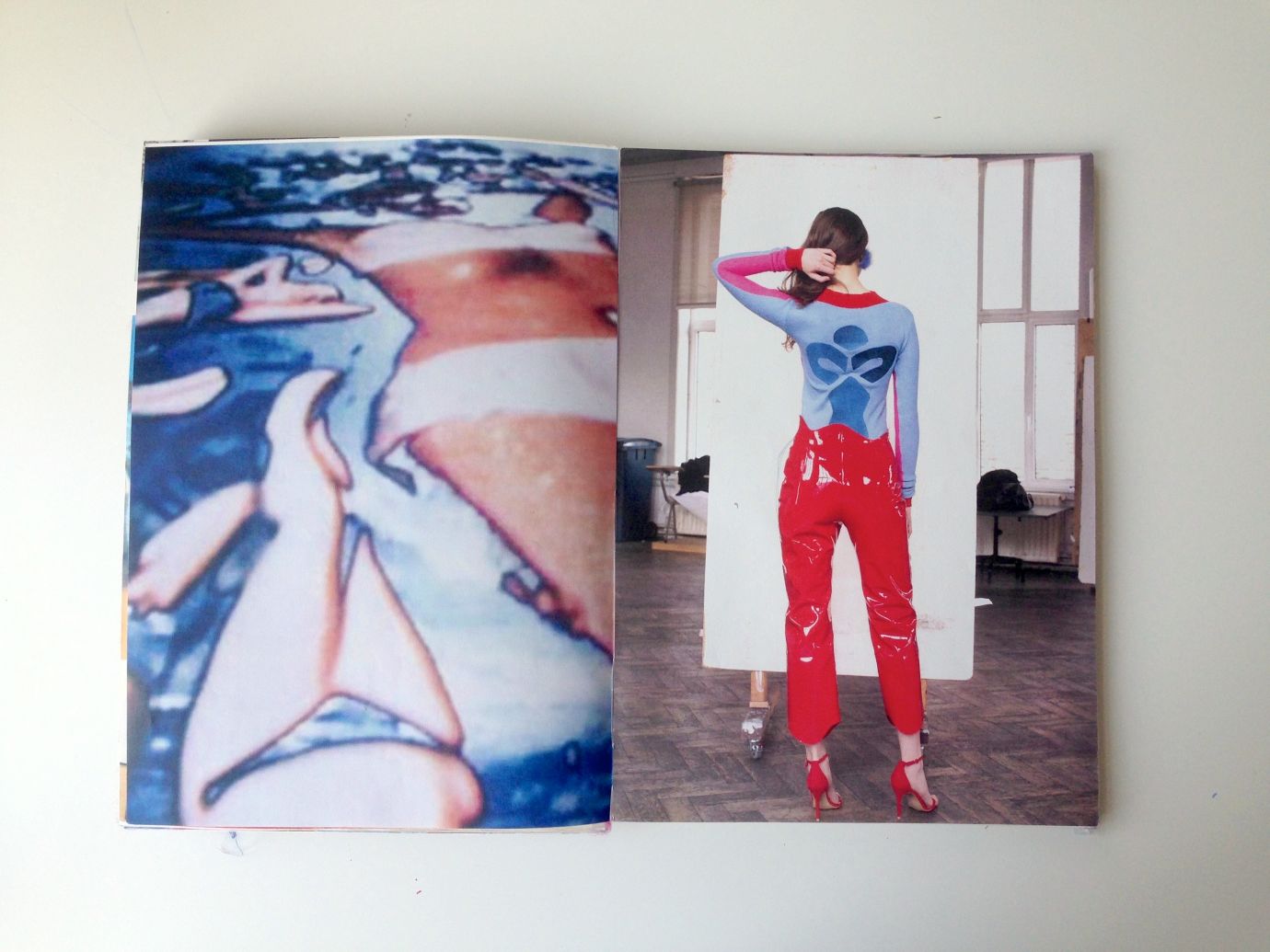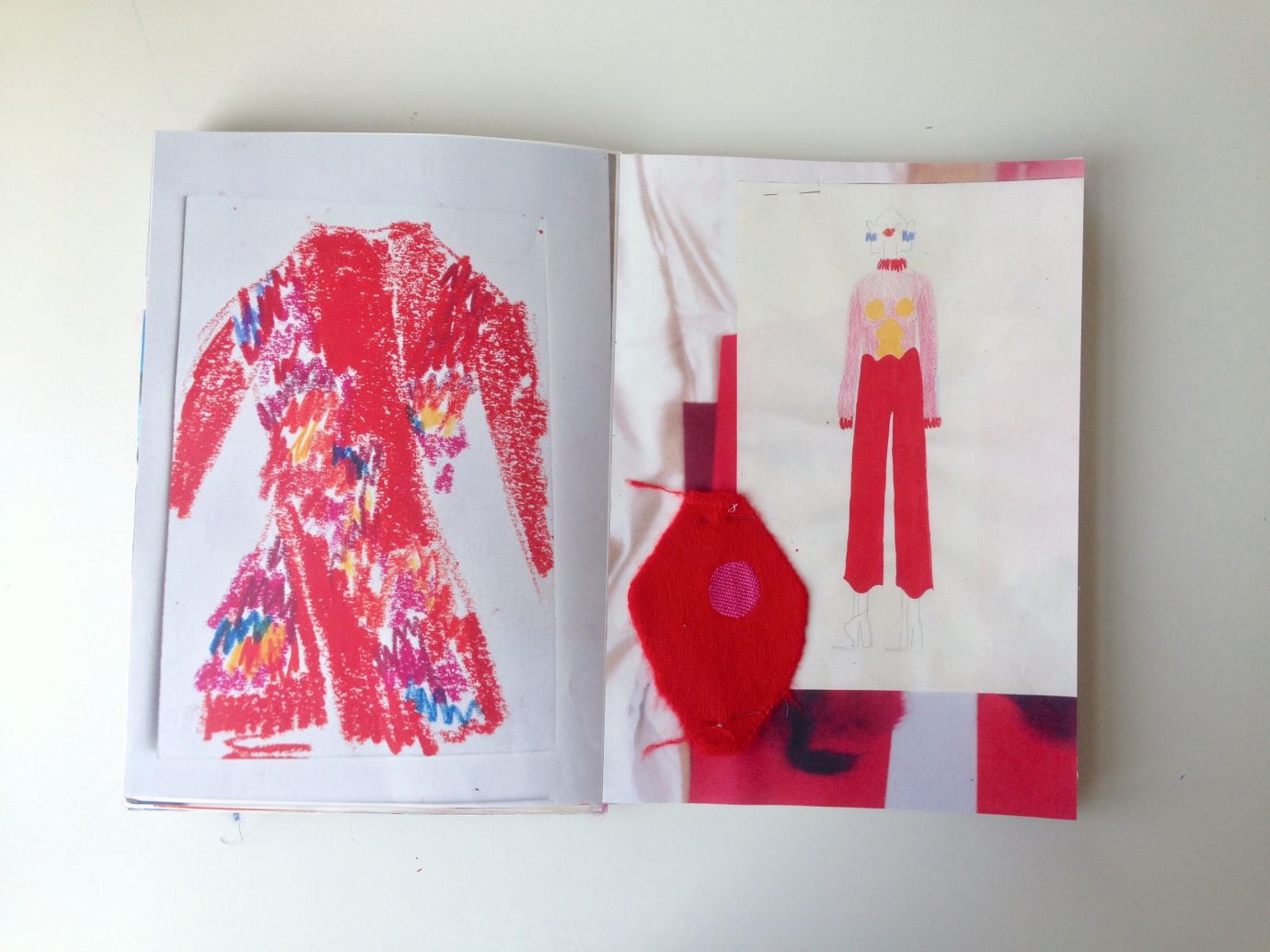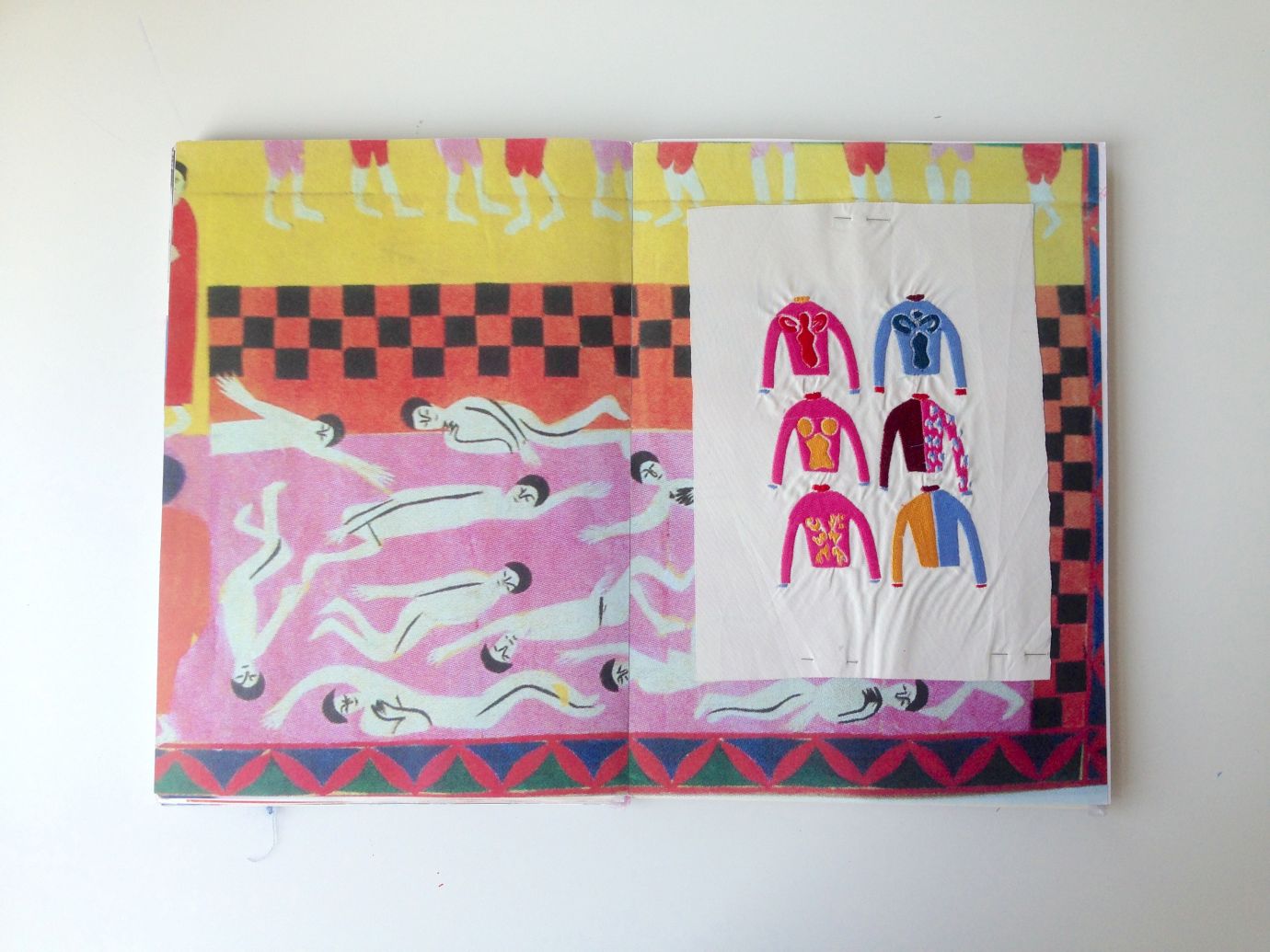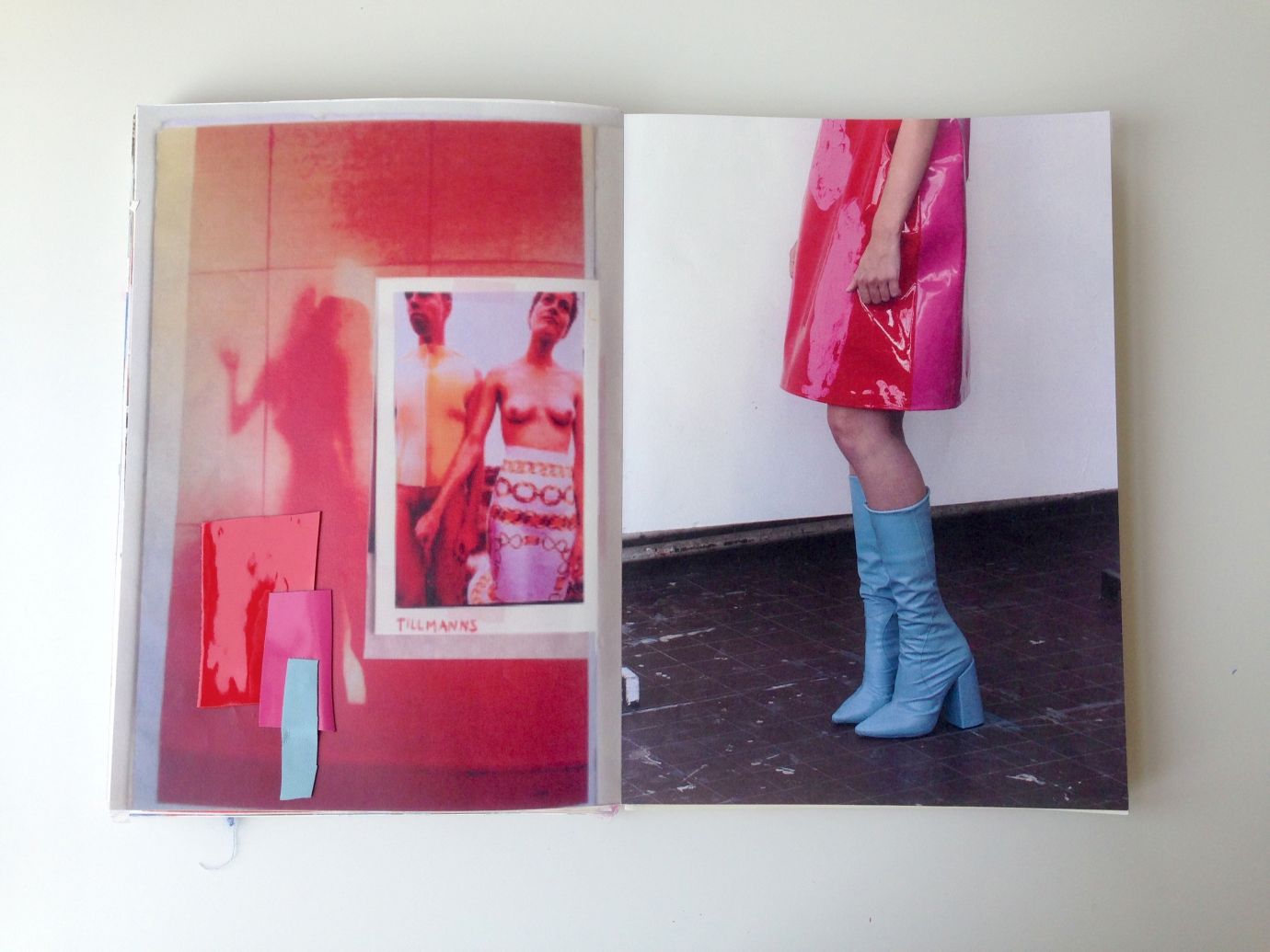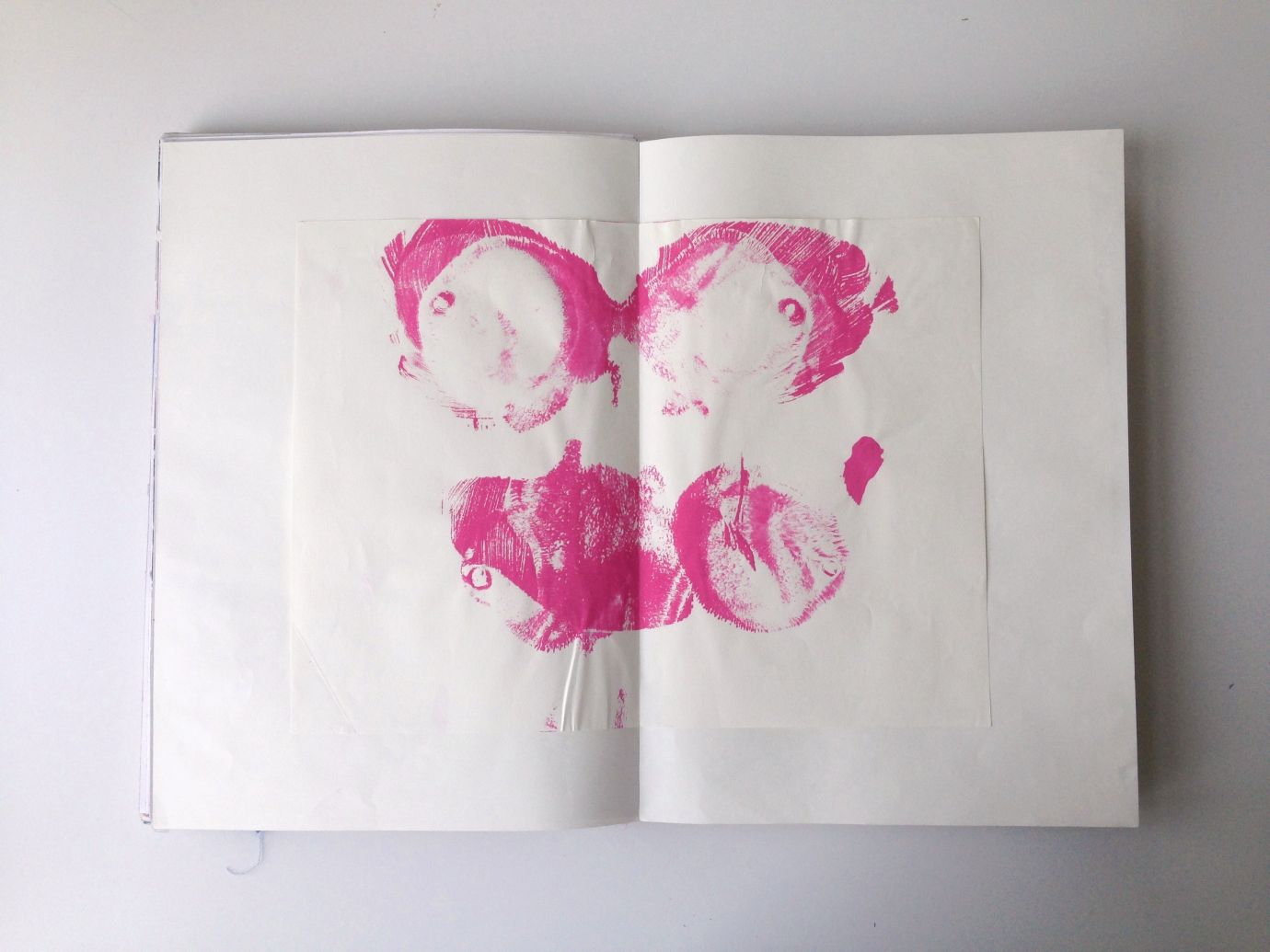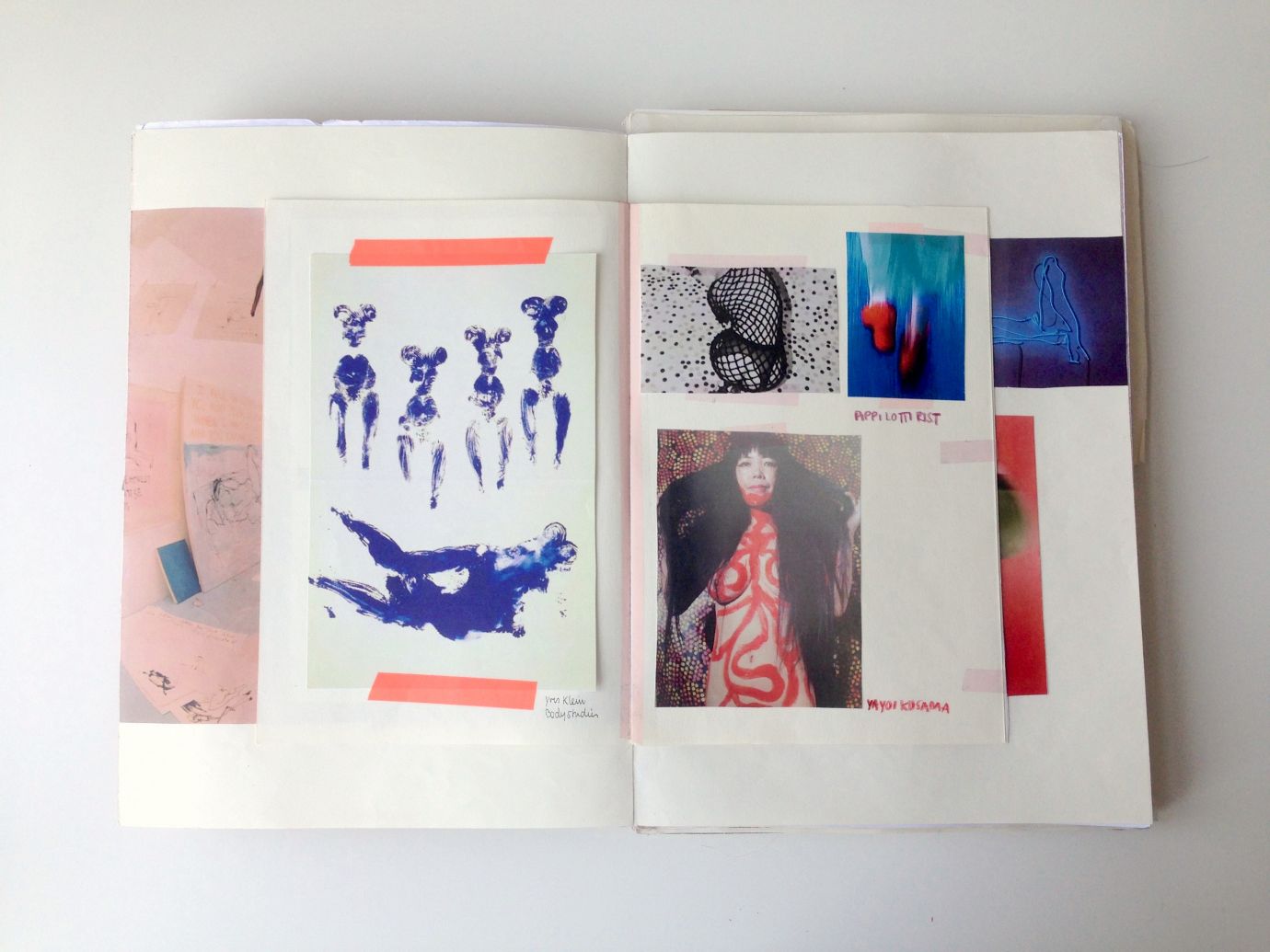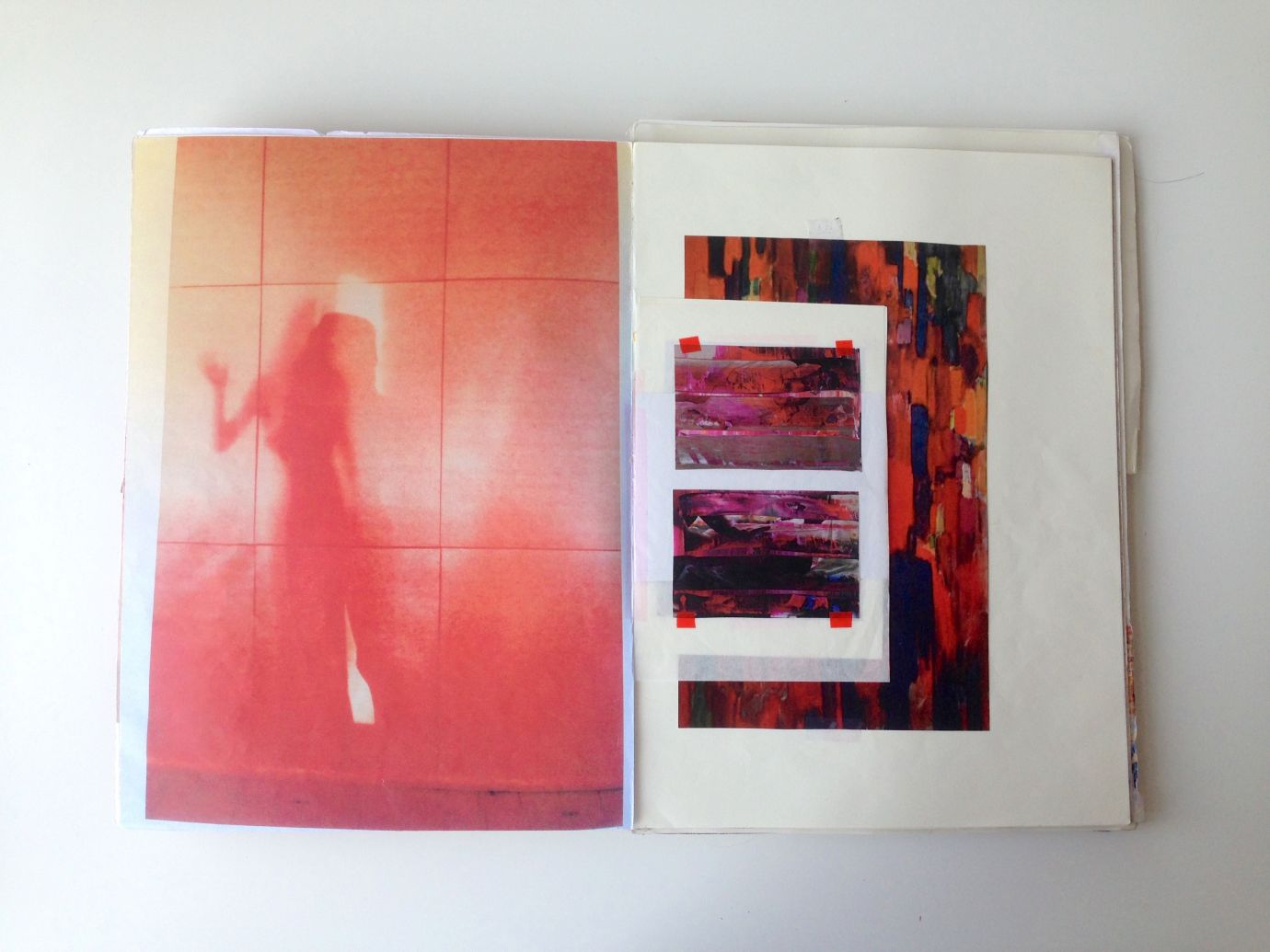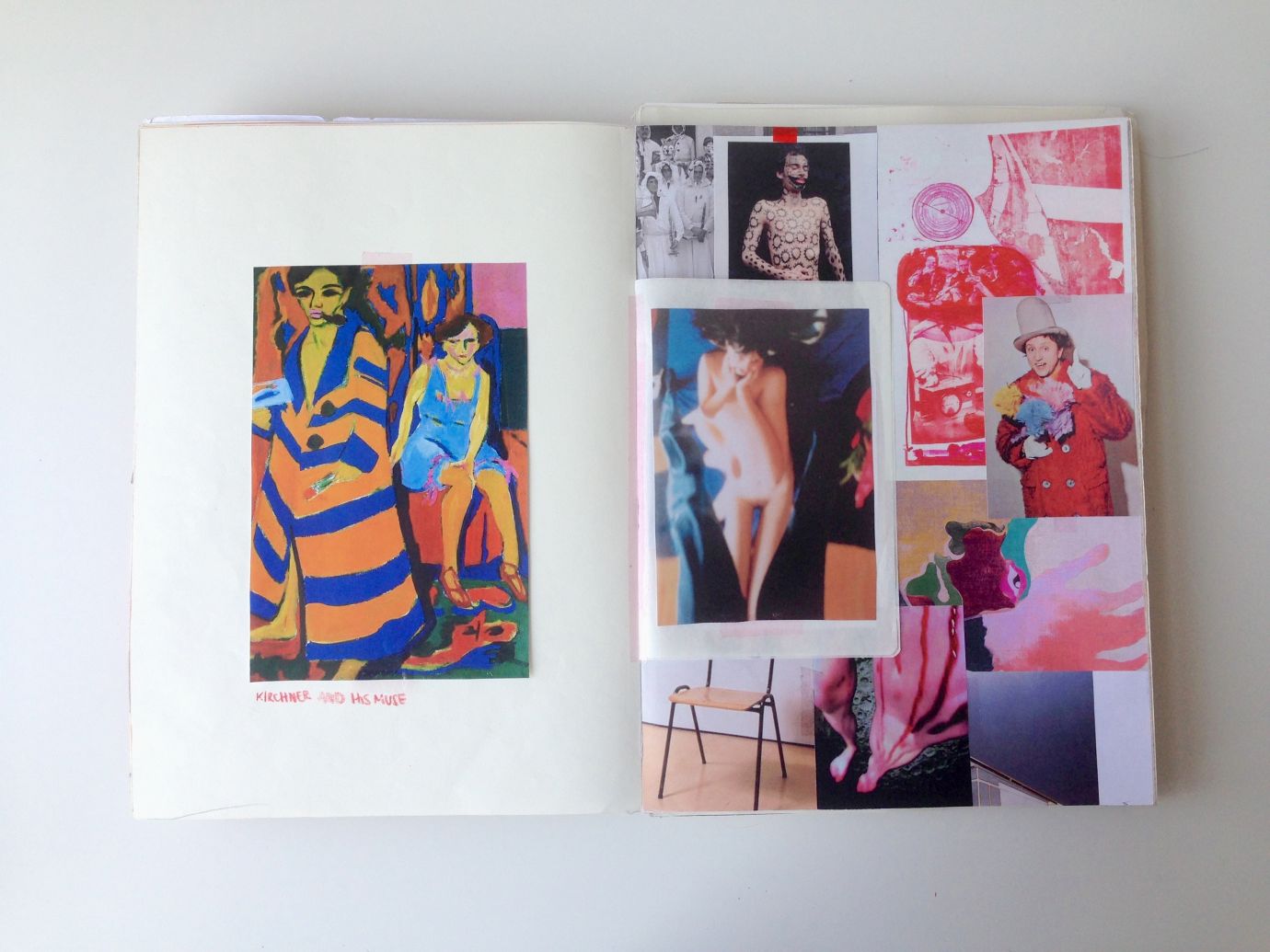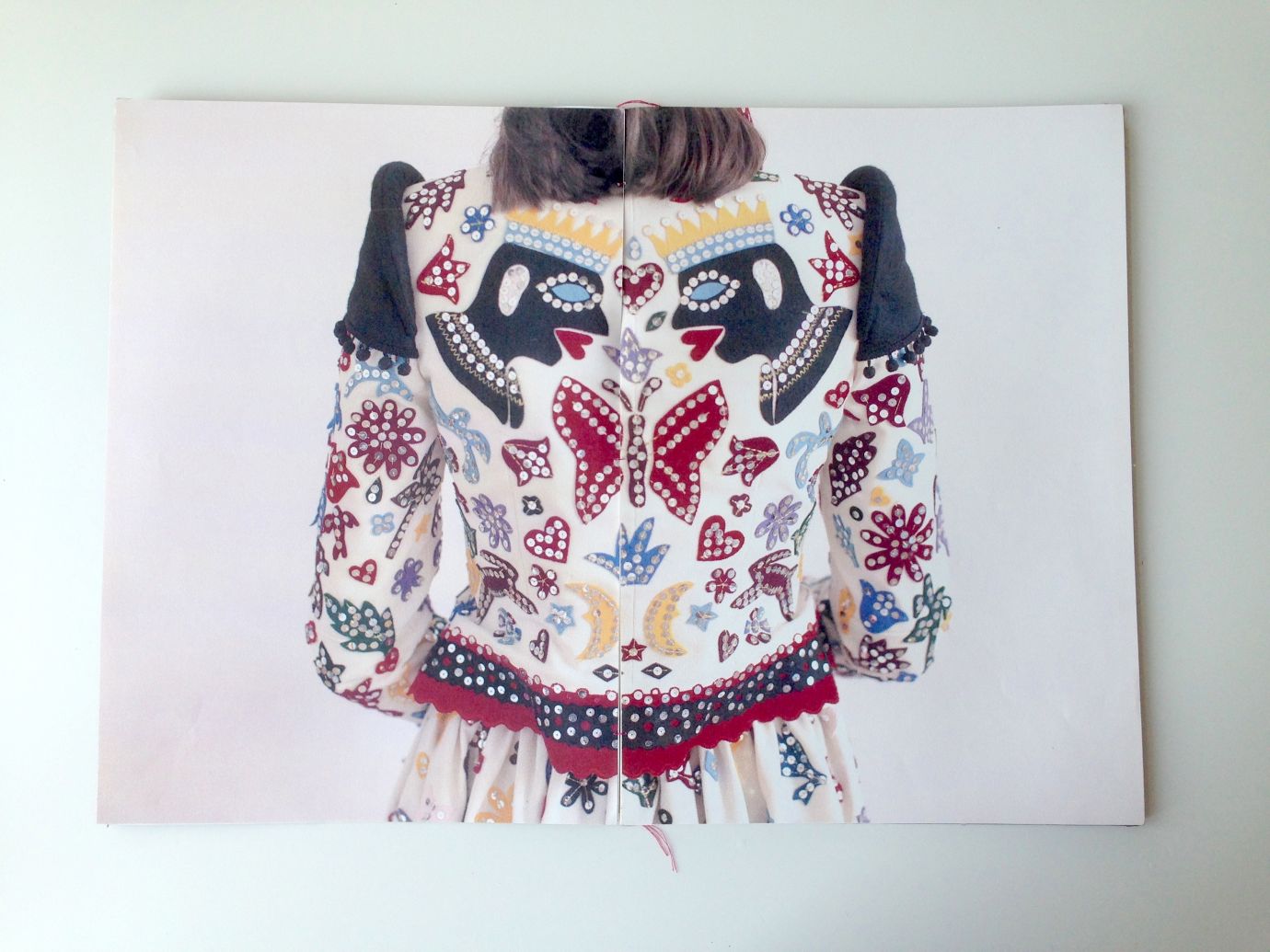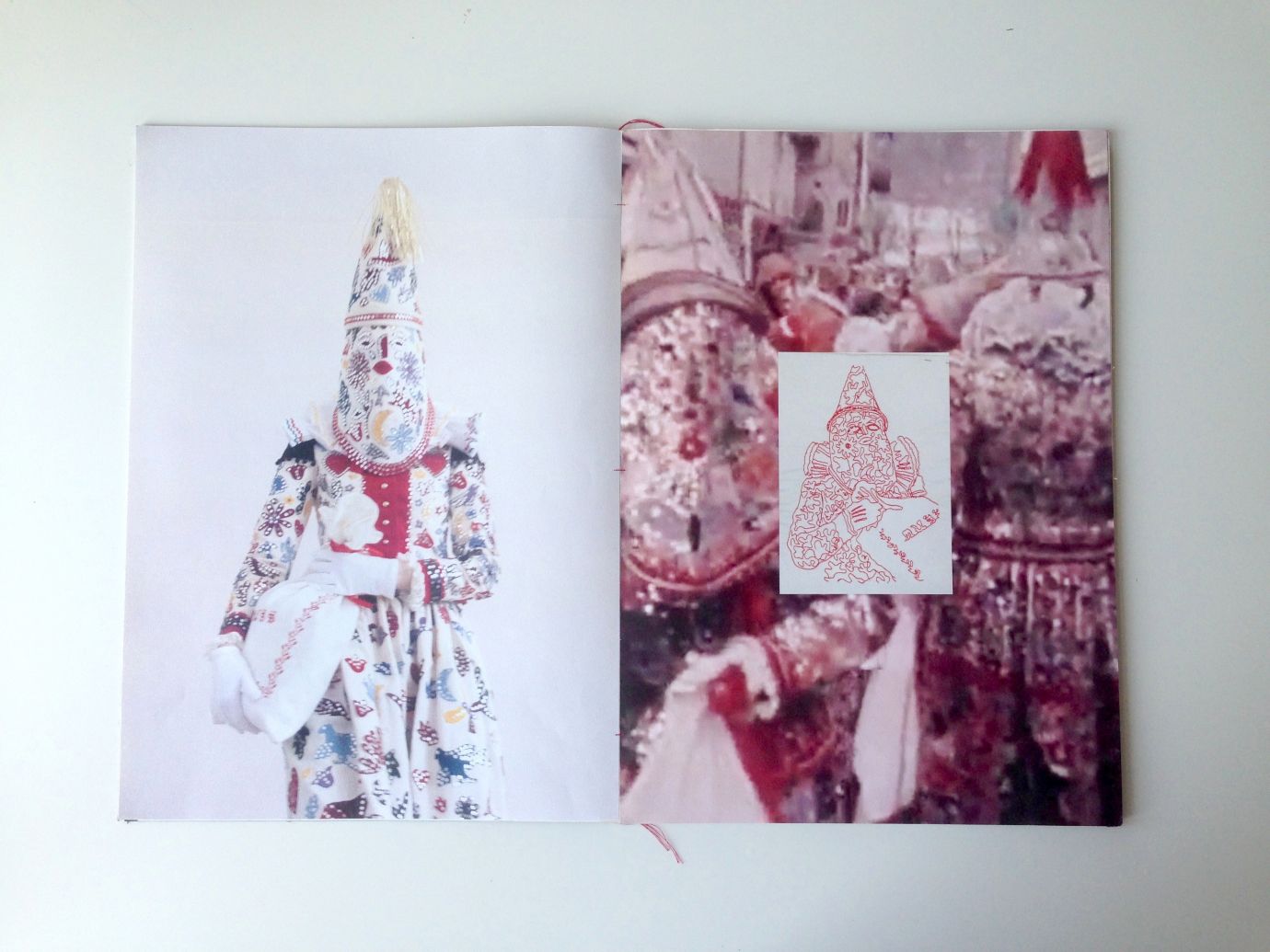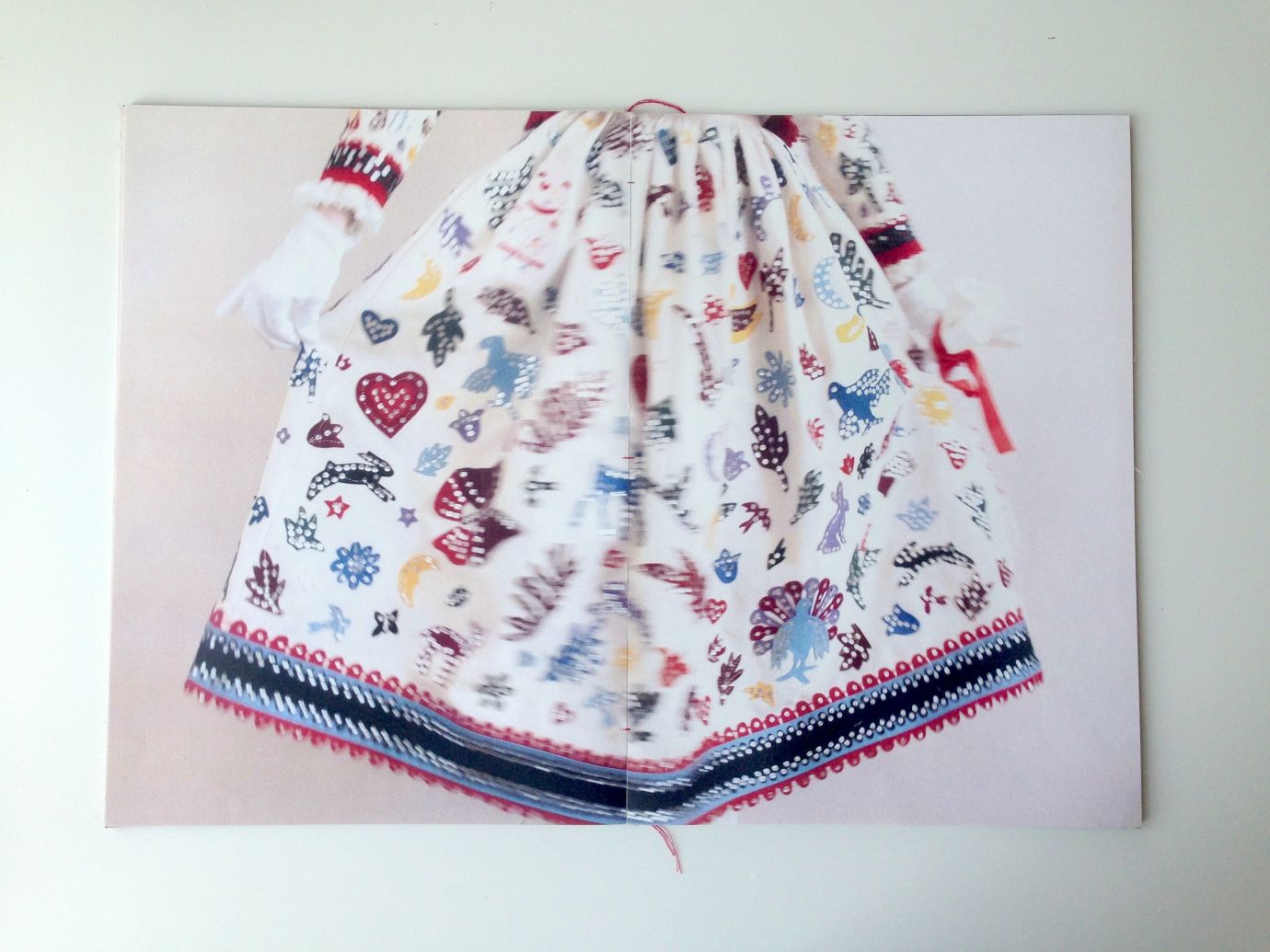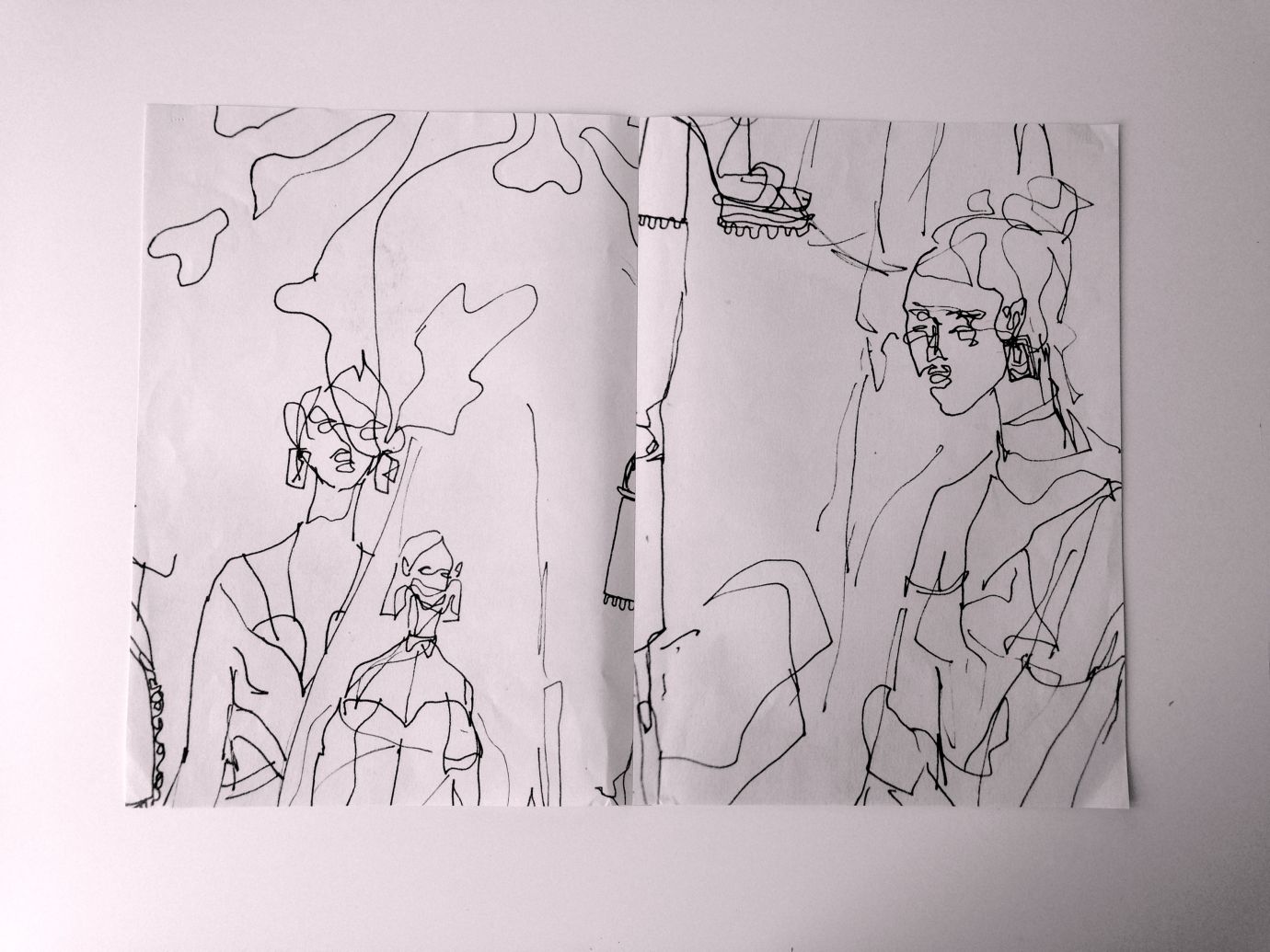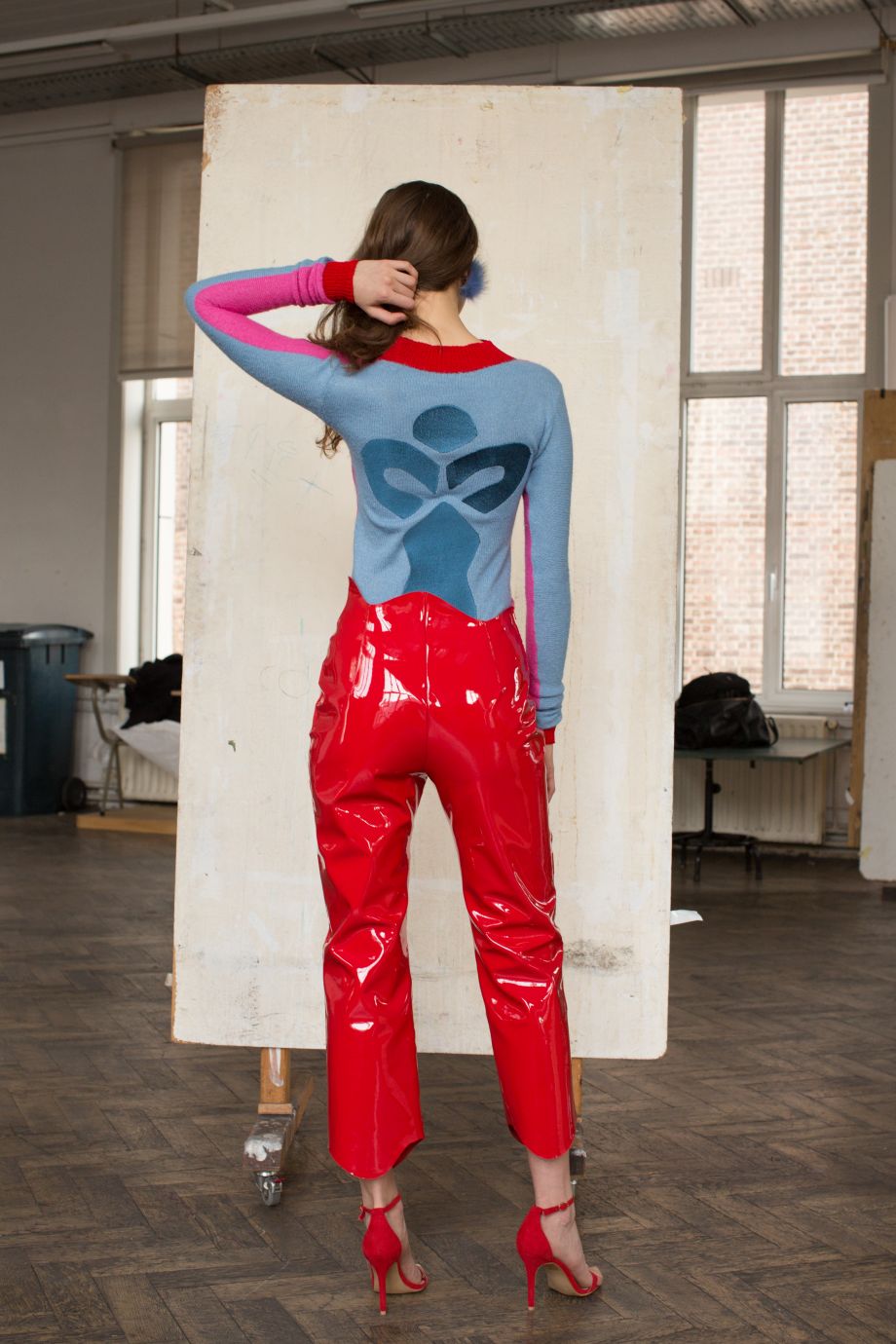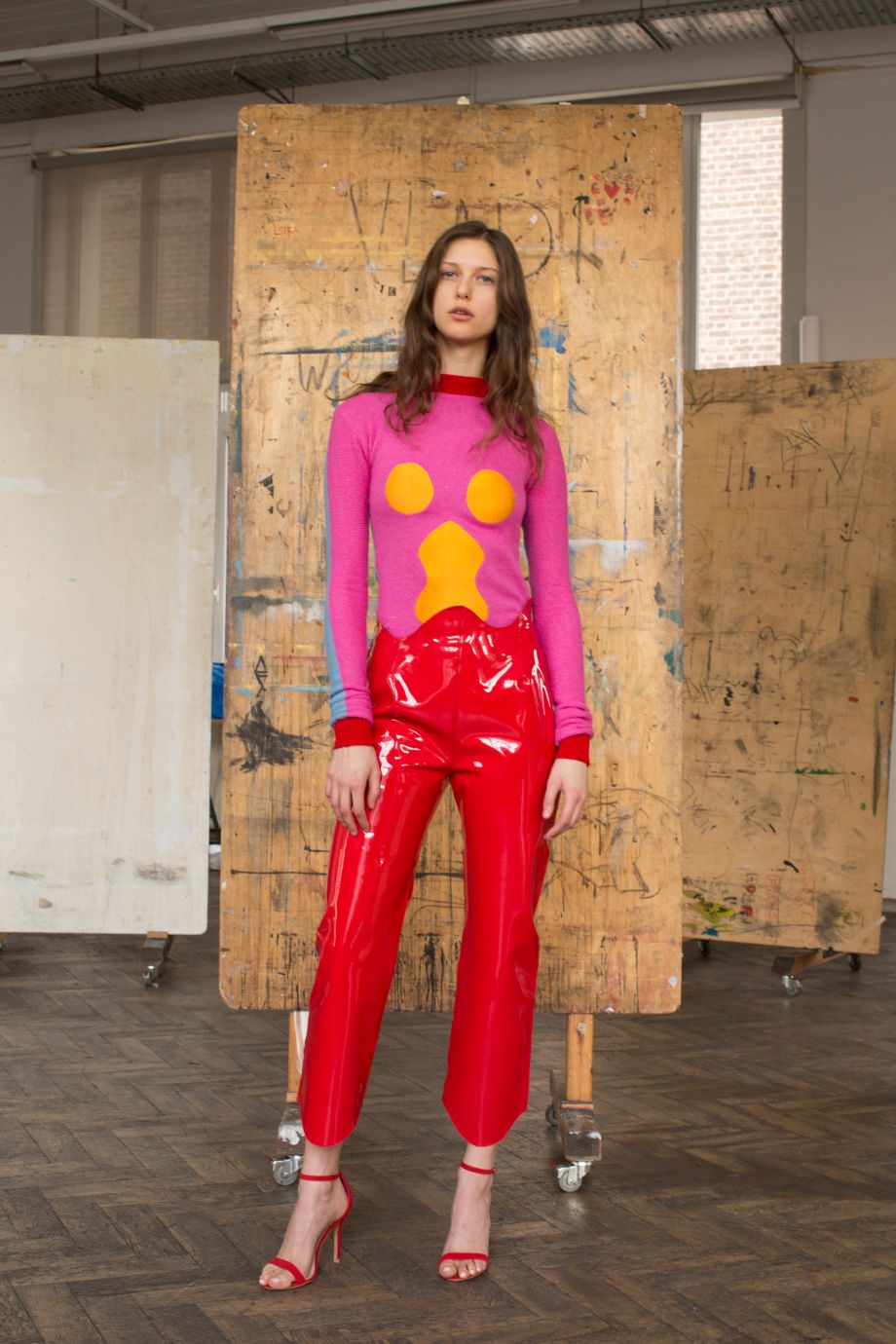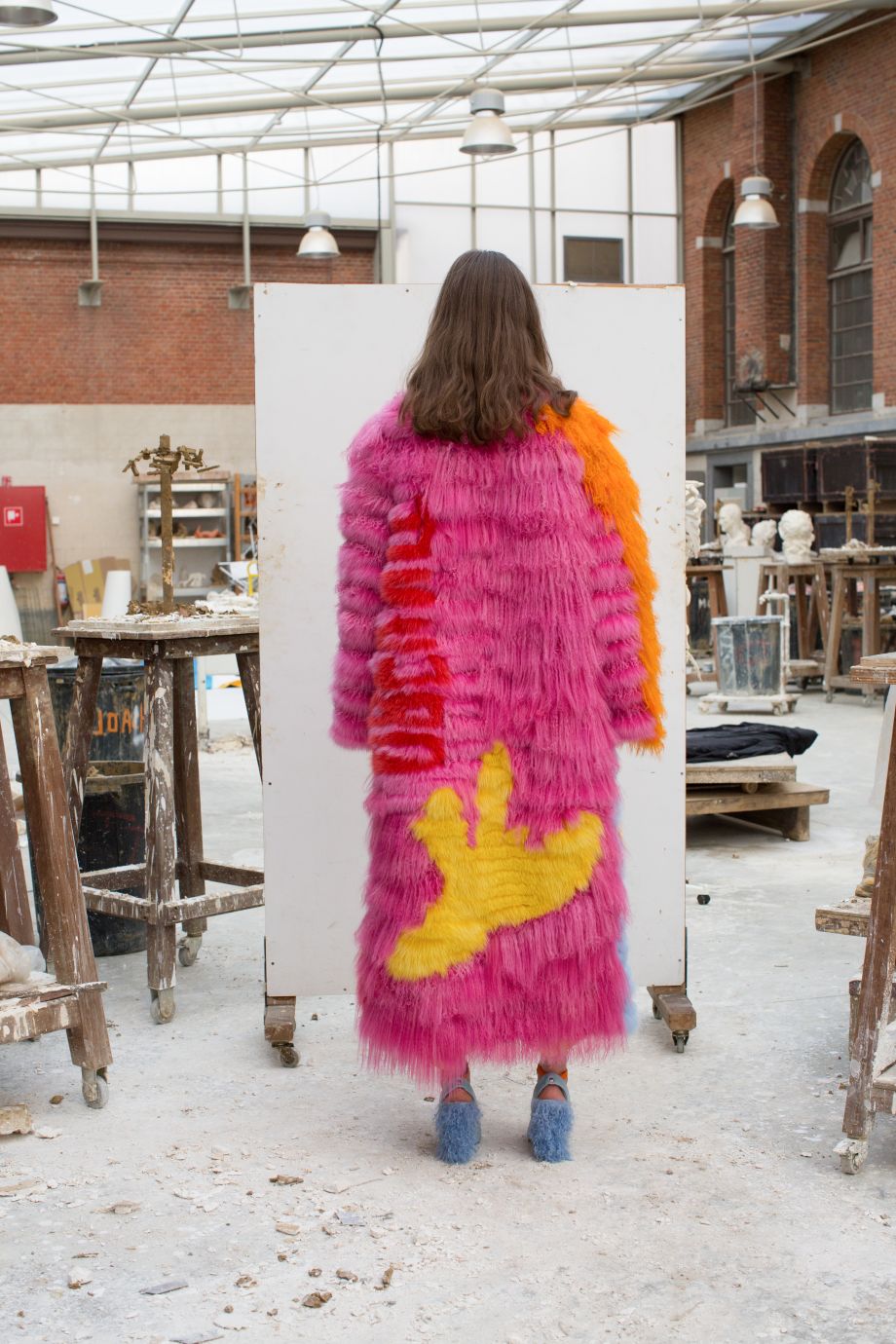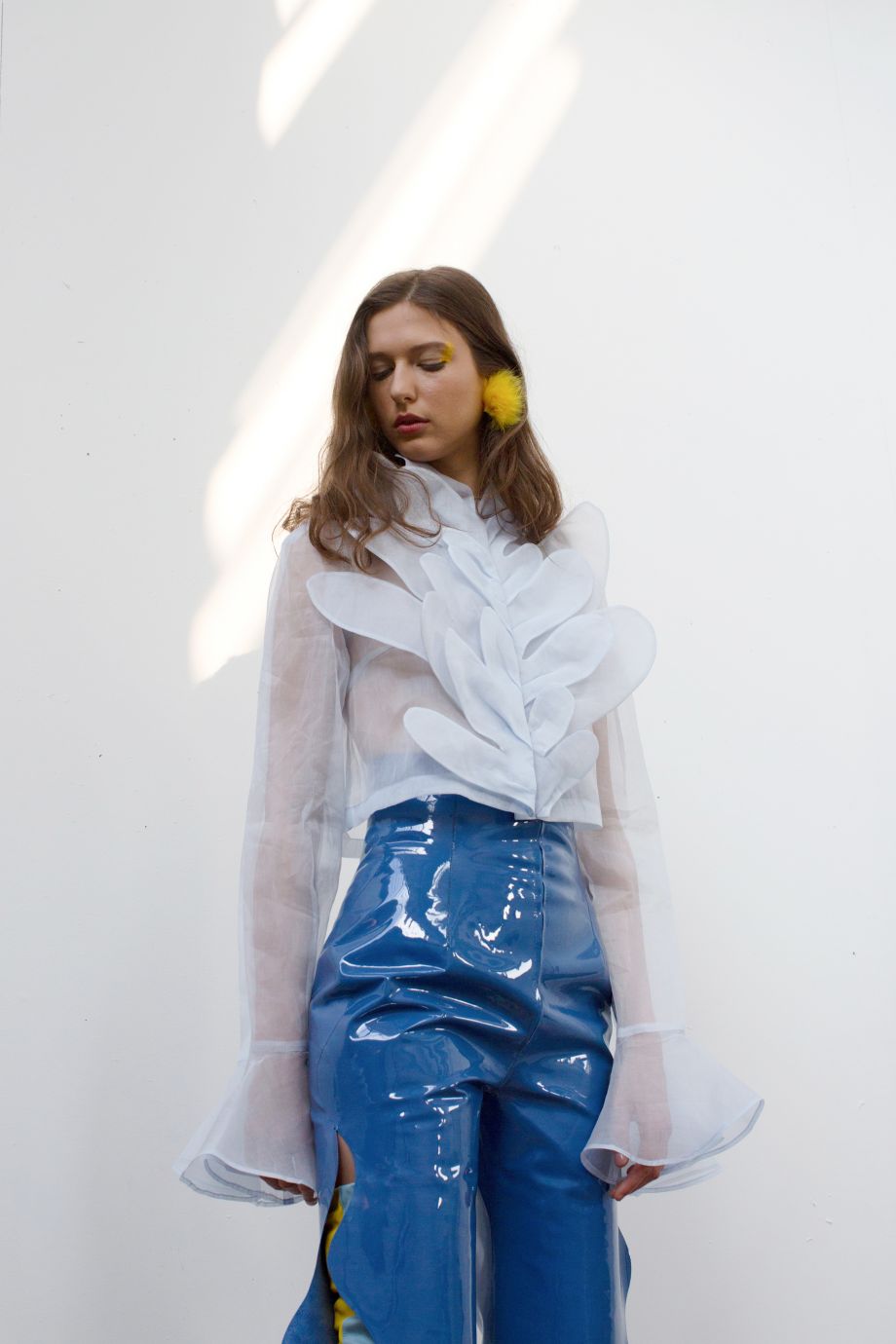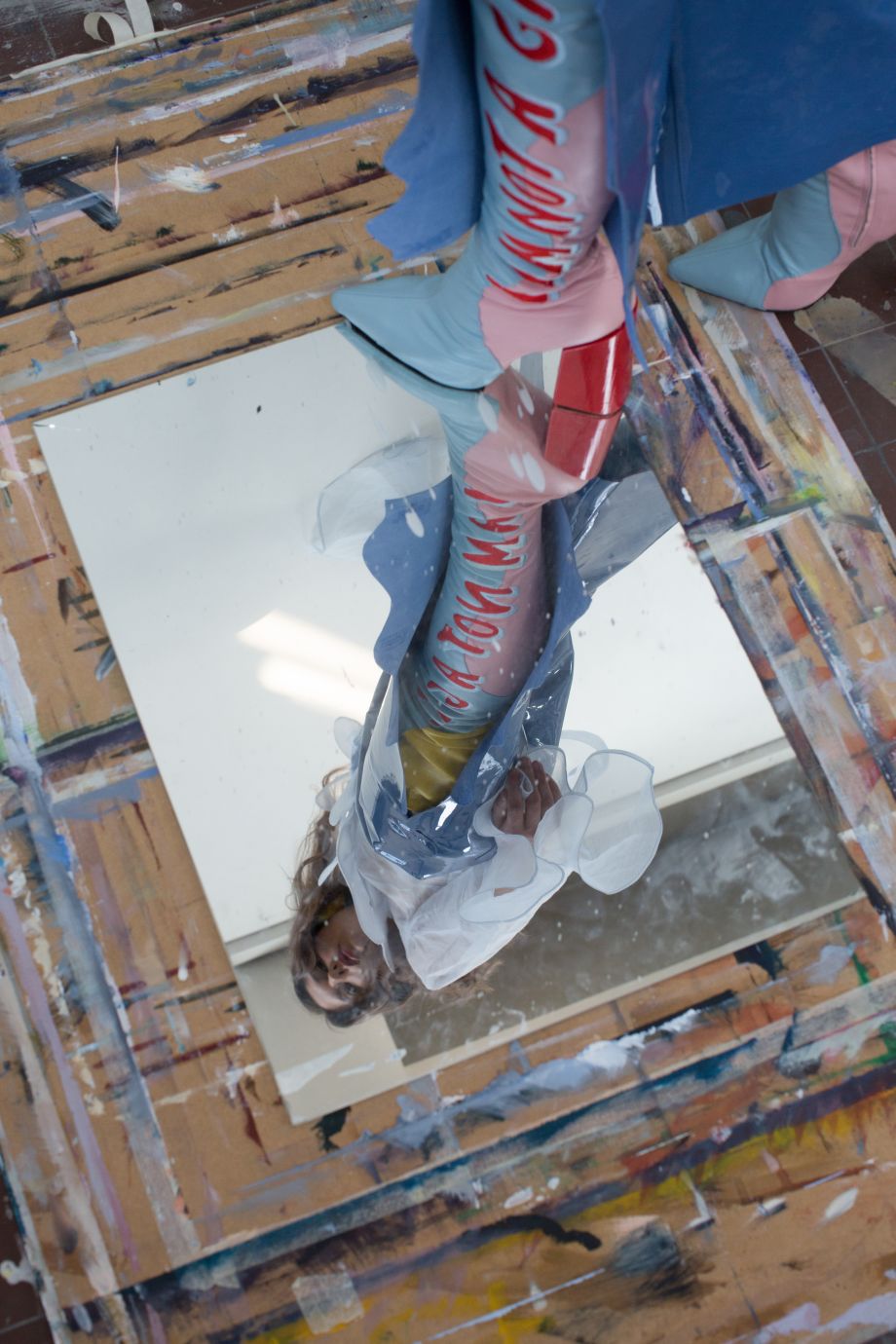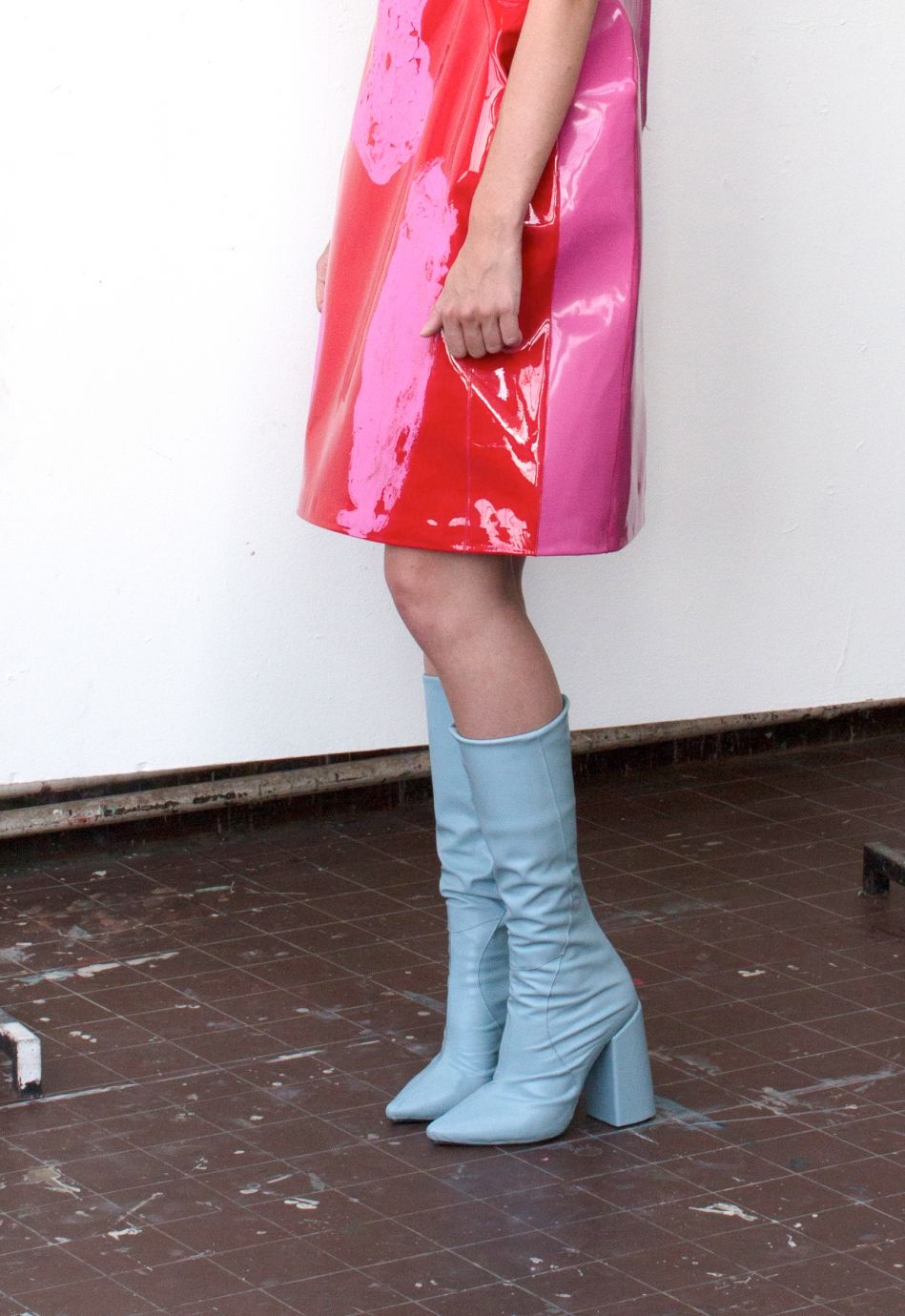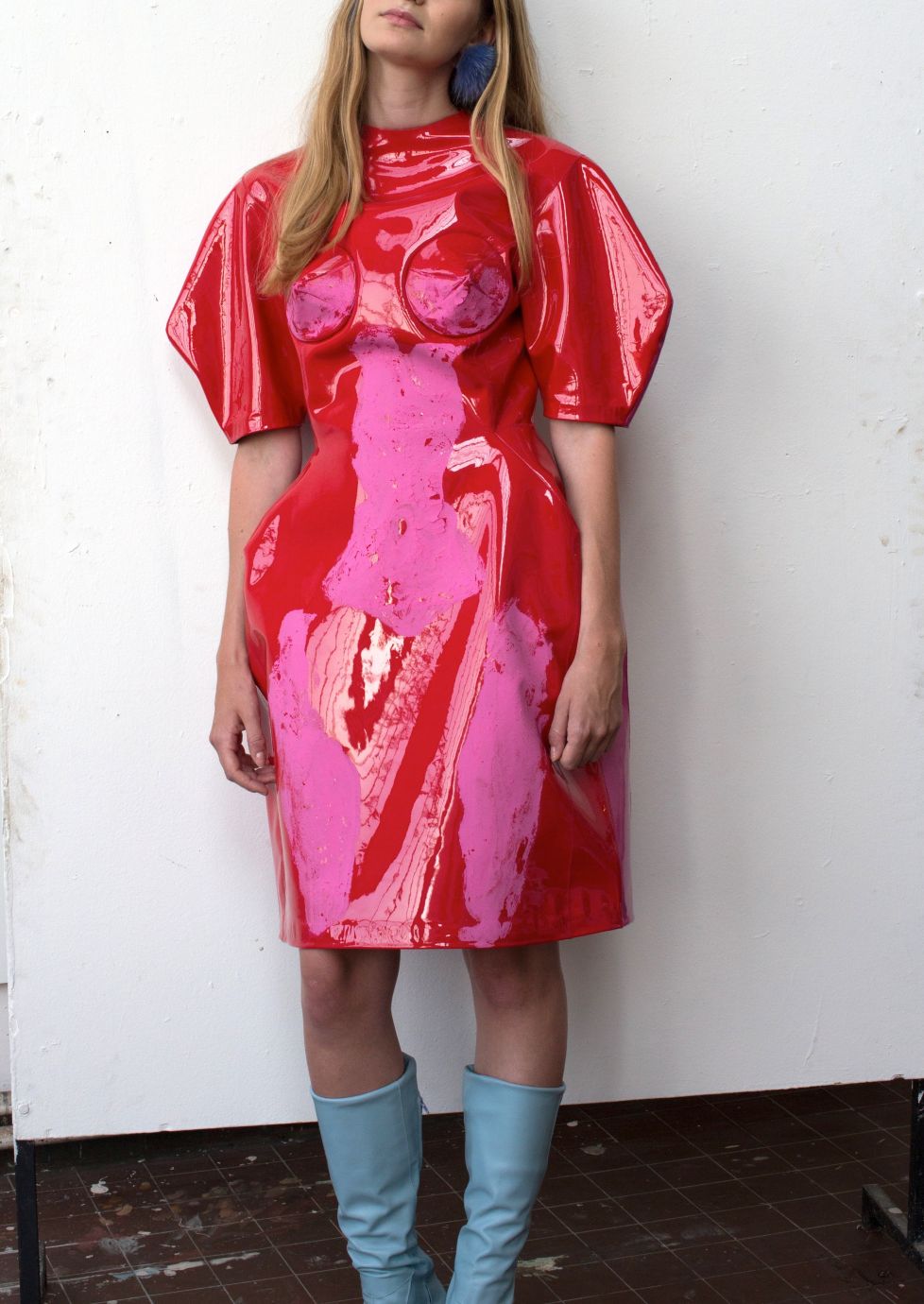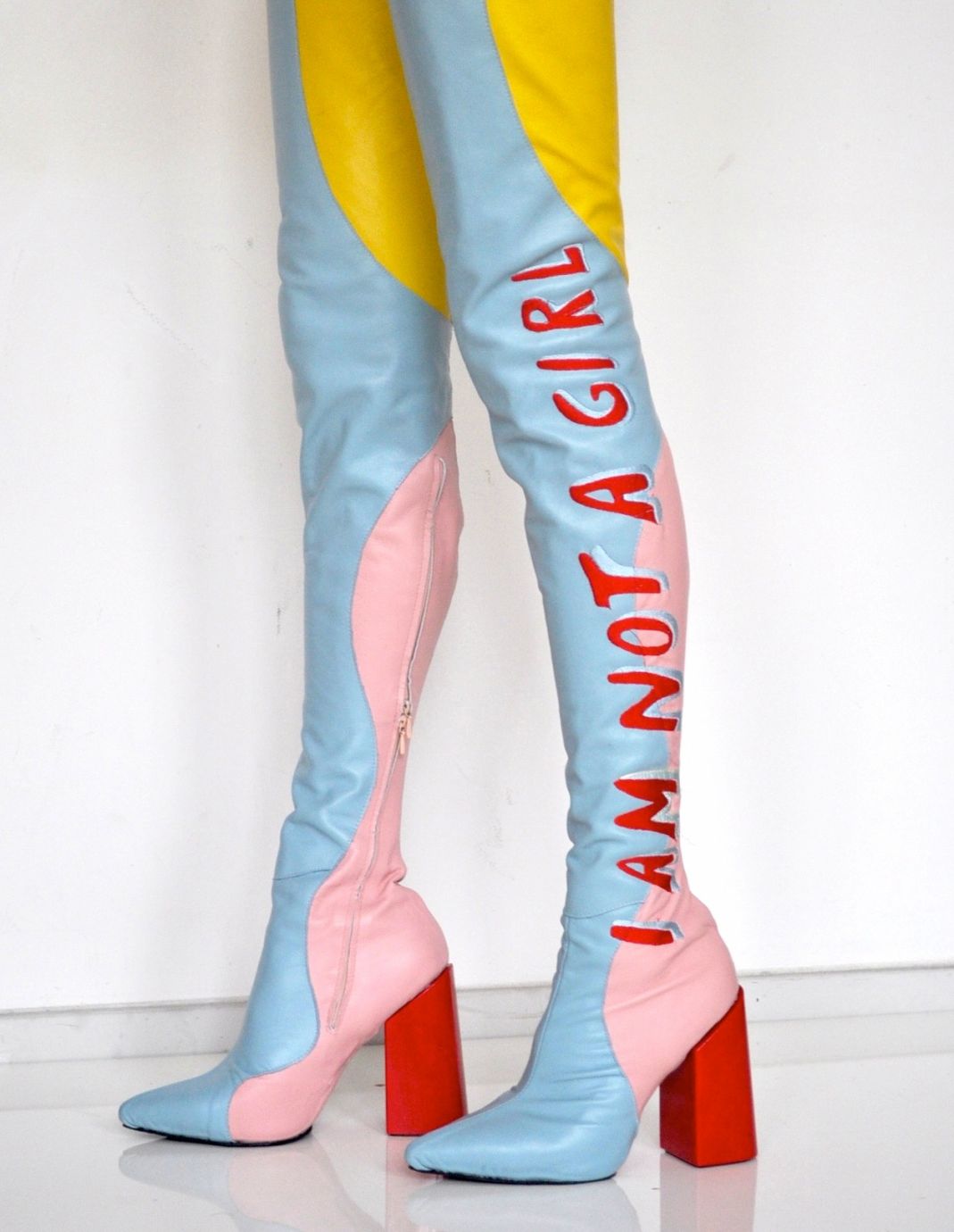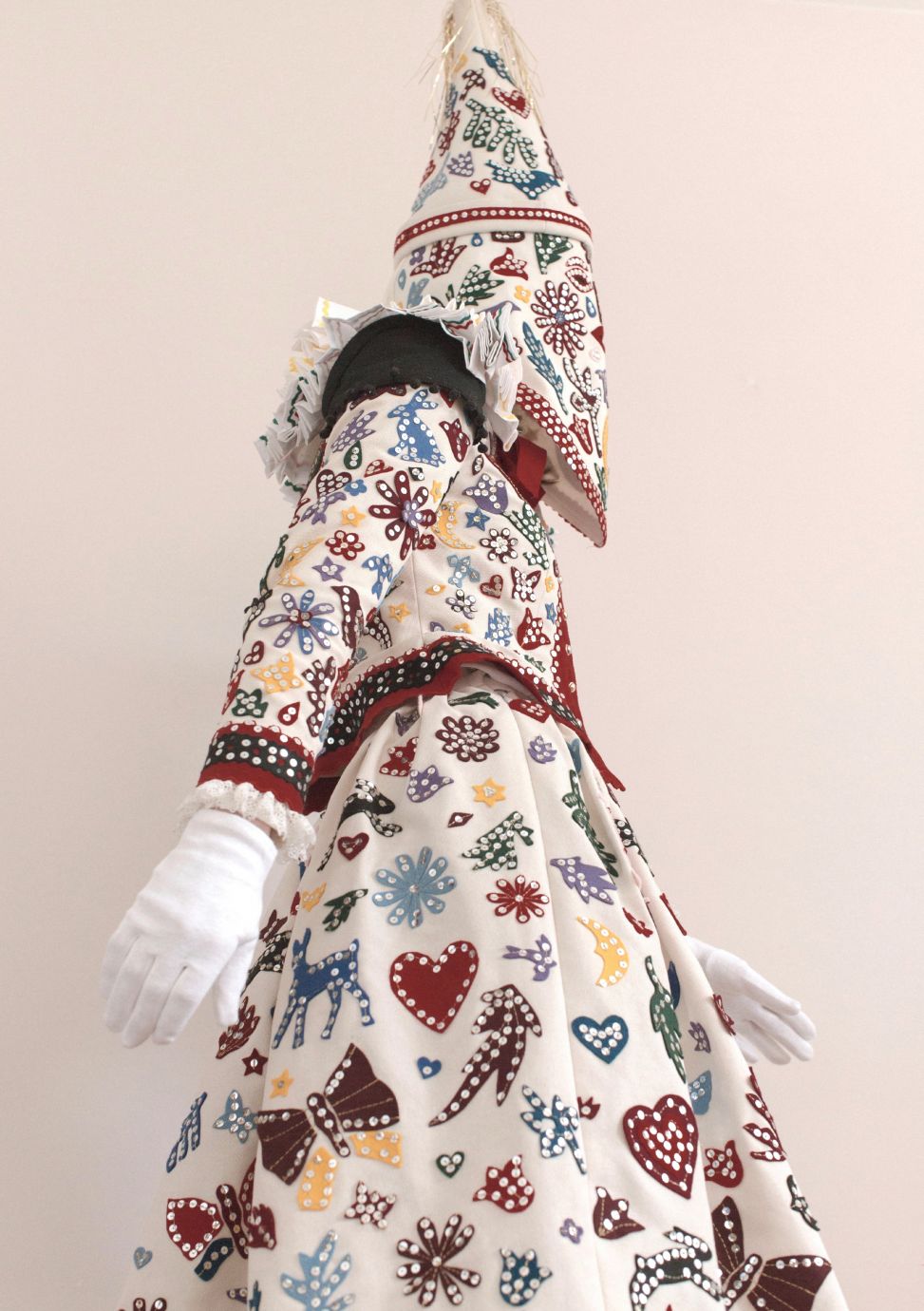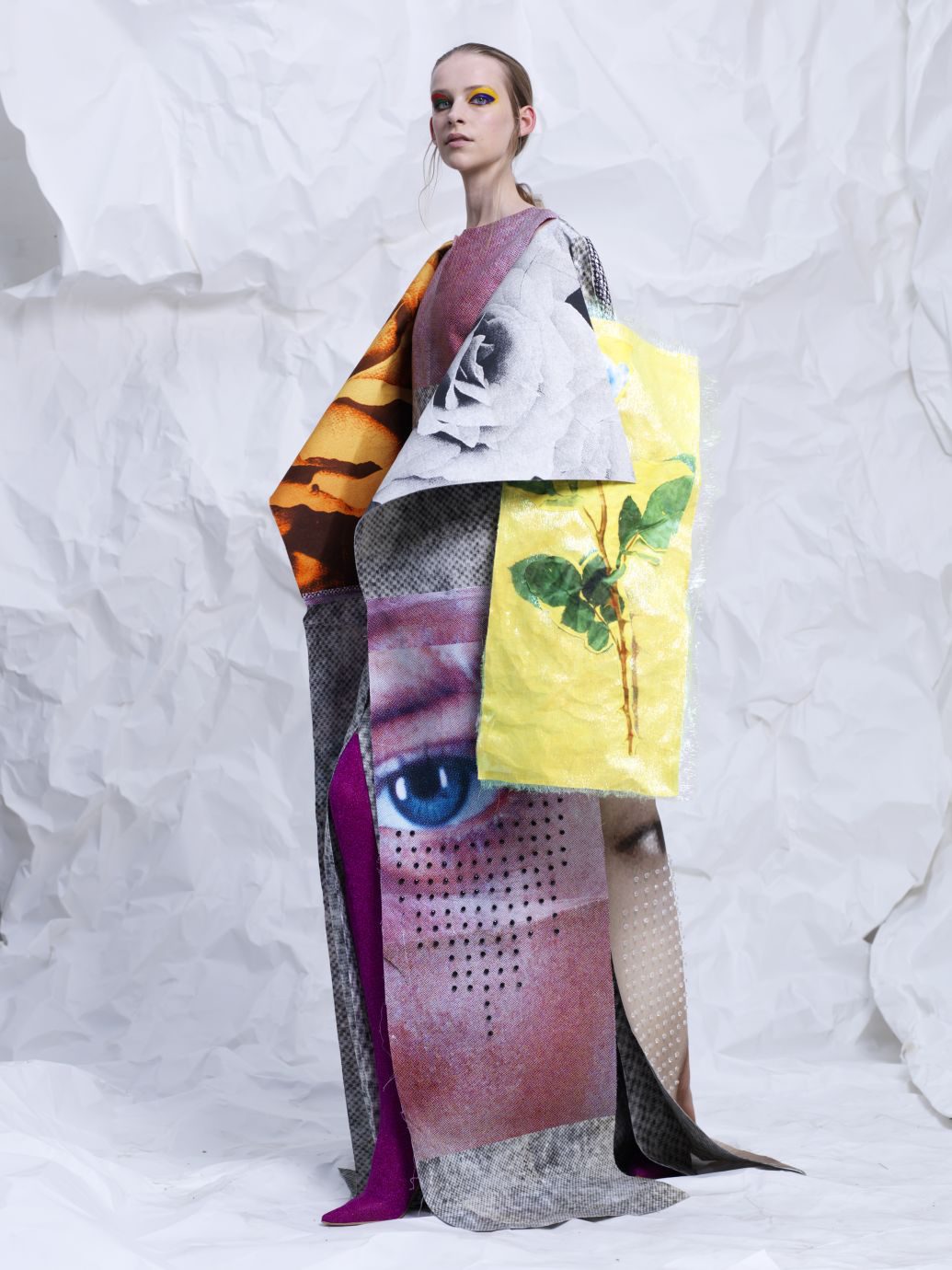Tell me about your BA collection, where did the initial inspiration come from?
Last year I went to New York for an internship at Proenza Schouler. In the weekends I visited a lot of exhibitions and interesting places. The city just has so much to offer! It was the first time I was able to read and absorb so much of the cultural background of a city, and I constantly found new inspirations. While I got particularly interested in the works of female artists such as Tracy Emin, Marina Abramovic and Pipilotti Rist, I was also inspired by the way artists like Yves Klein introduced the female body as a powerful tool to create art. This was a crucial feature in my collection. Being fascinated by their strong characters and very feminine art, I decided to look for more artists in that direction and read a lot about them.
I realised that what interested me most was the artists´ personal life and how this aspect is reflected in their work. In Abramovic’s case for instance, her personal relationship and artistic collaboration with German artist Ulay were important elements within her work. Their story reminded me of my parents. They are both artists, so I grew up surrounded by their work. It was very interesting to study their work now that I am older. Even though they work in different fields -my mother is a photographer and my father a painter- I realised that their works have a lot in common. They often deal with the same topics and images that are clearly recognizable, although they express themselves differently. My parents complemented each other´s work: while my father was very organized and his paintings are very graphical, my mother was more emotional and her photos quite organic. I have tried to integrate these aspects in my collection. I think the most visible aspect they share is their common colour language, an affinity with certain colours. It is a colour palette I unconsciously also use in my own work, which for this reason became very personal.
Who do you admire and why?
I really like the work of Dries van Noten. I think it is exceptional how contemporary but also timeless his creations are. His work is full of research and craftsmanship and he manages to create a new mood for every collection and yet still remaining truthful to his own and unique style.

